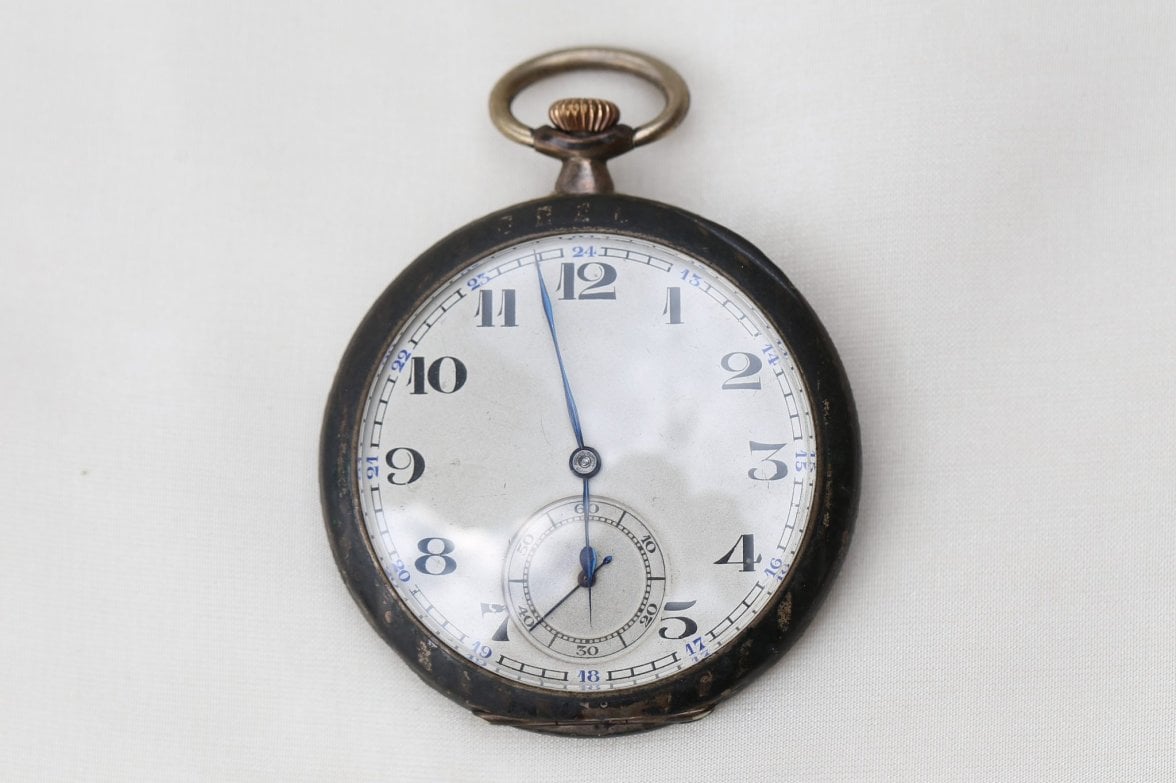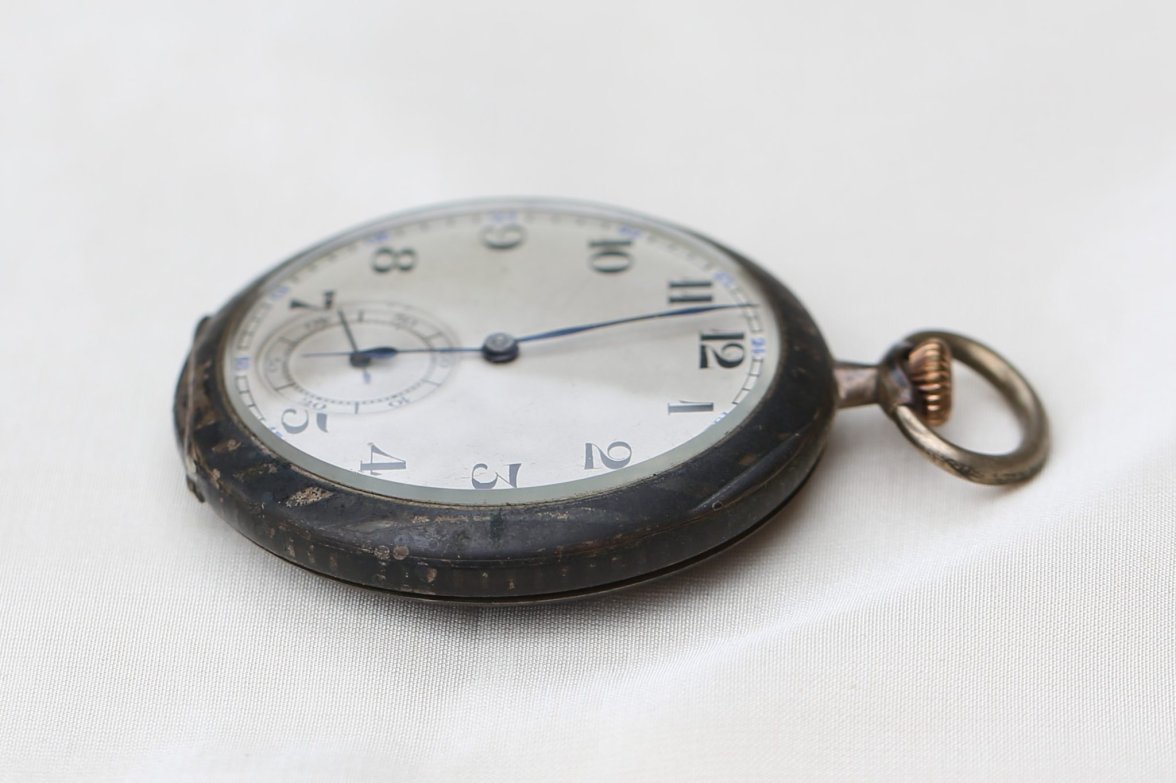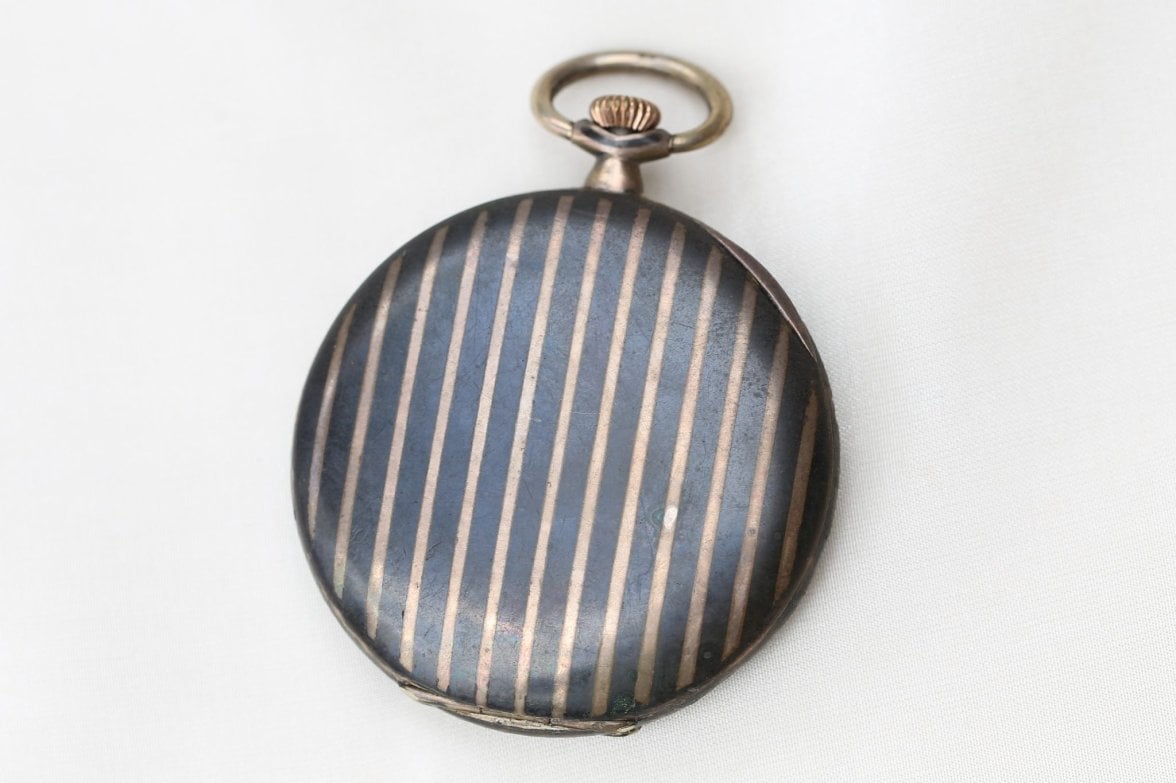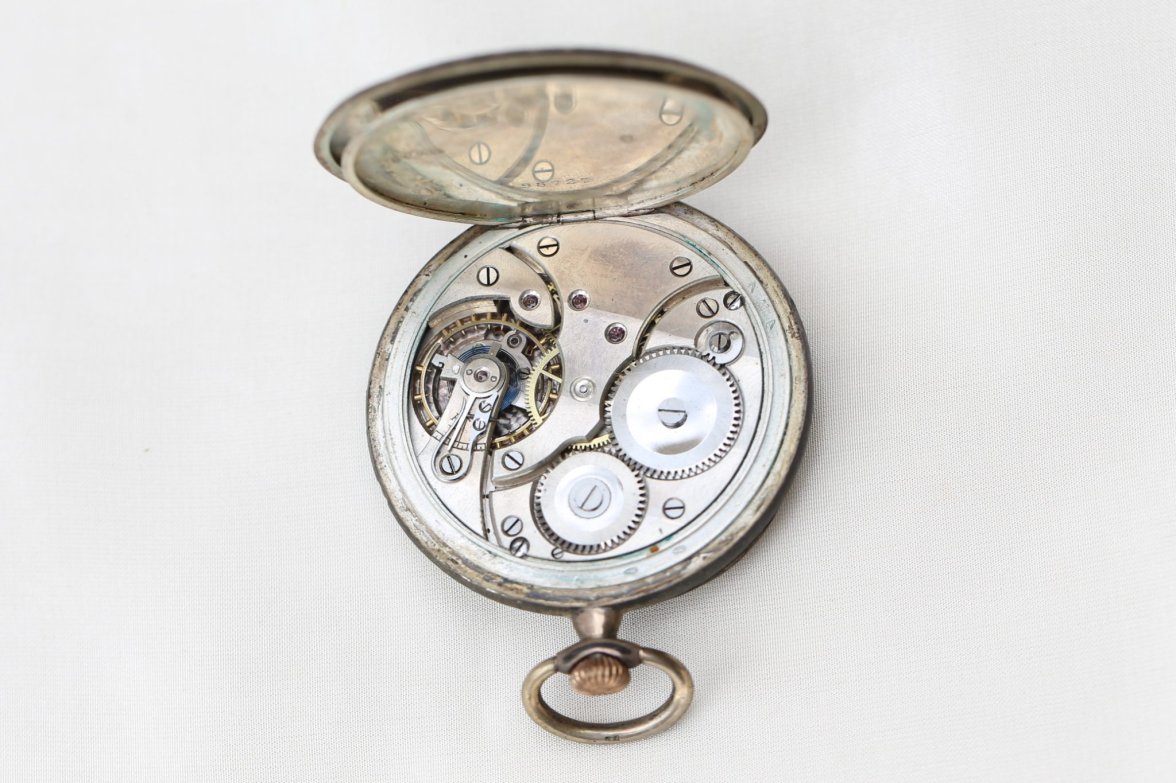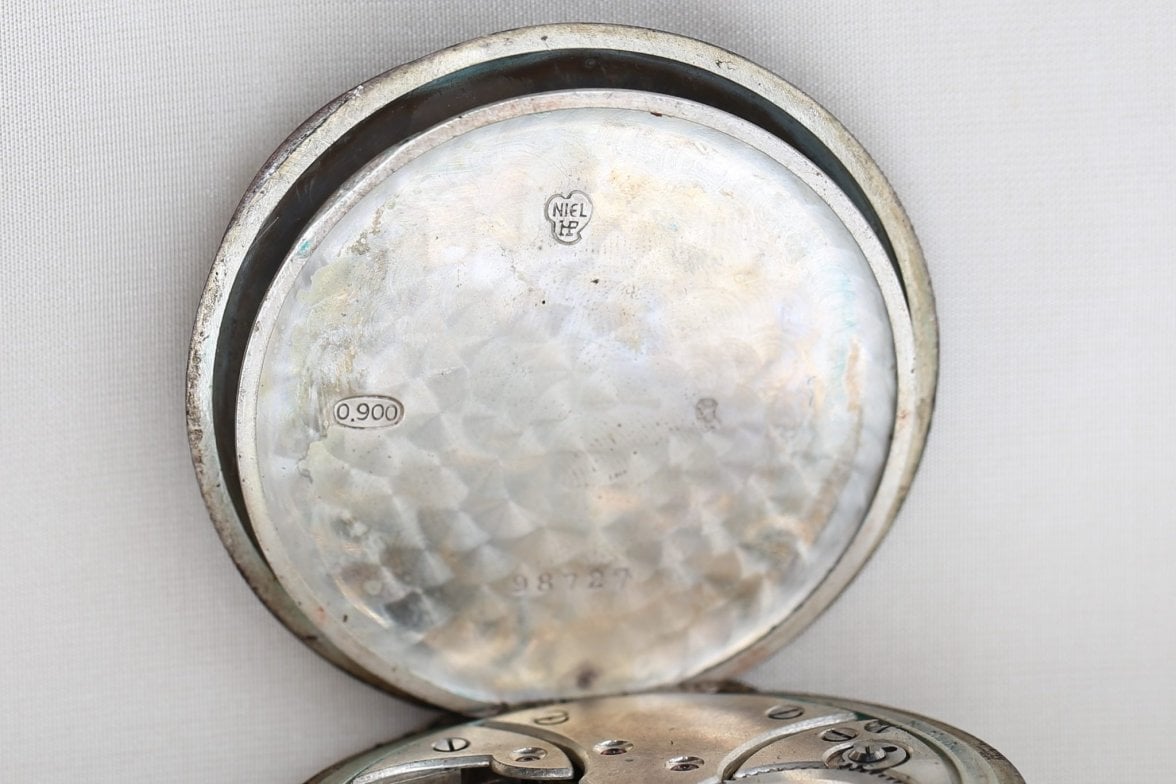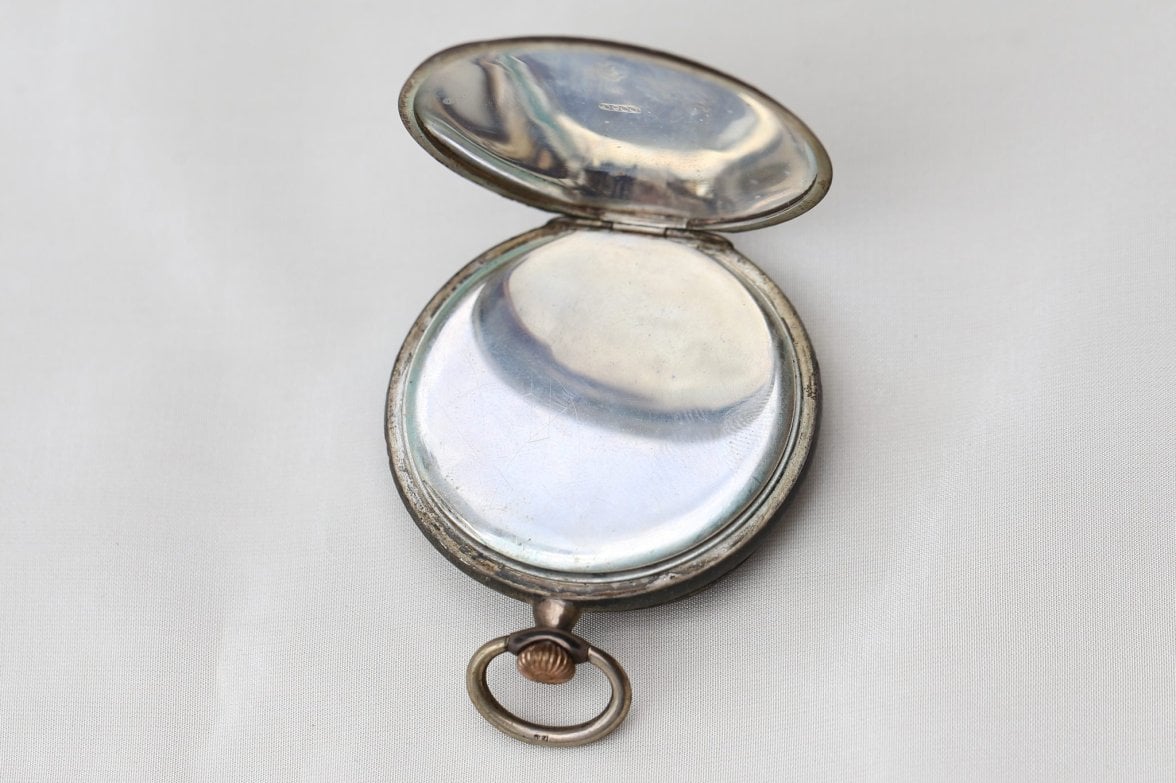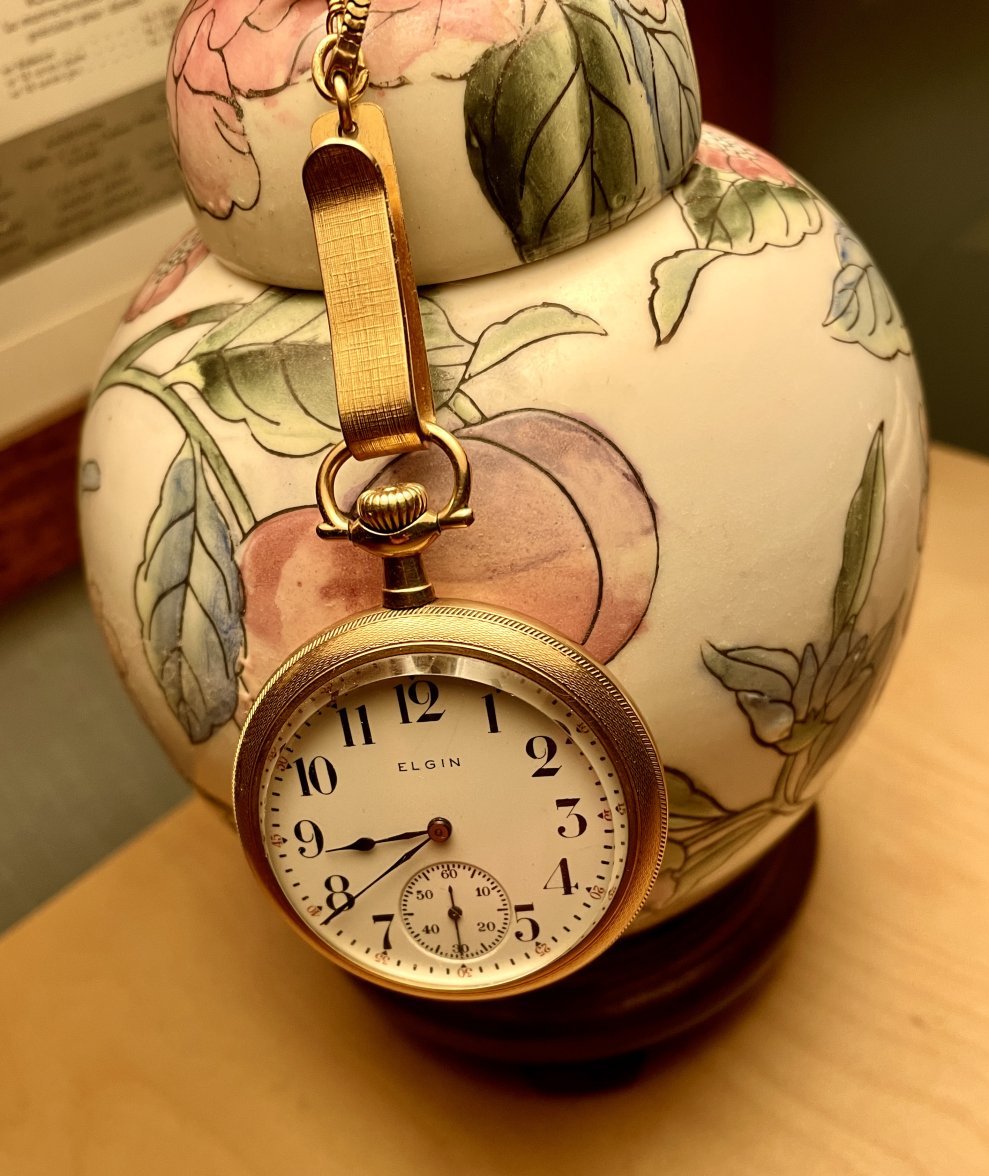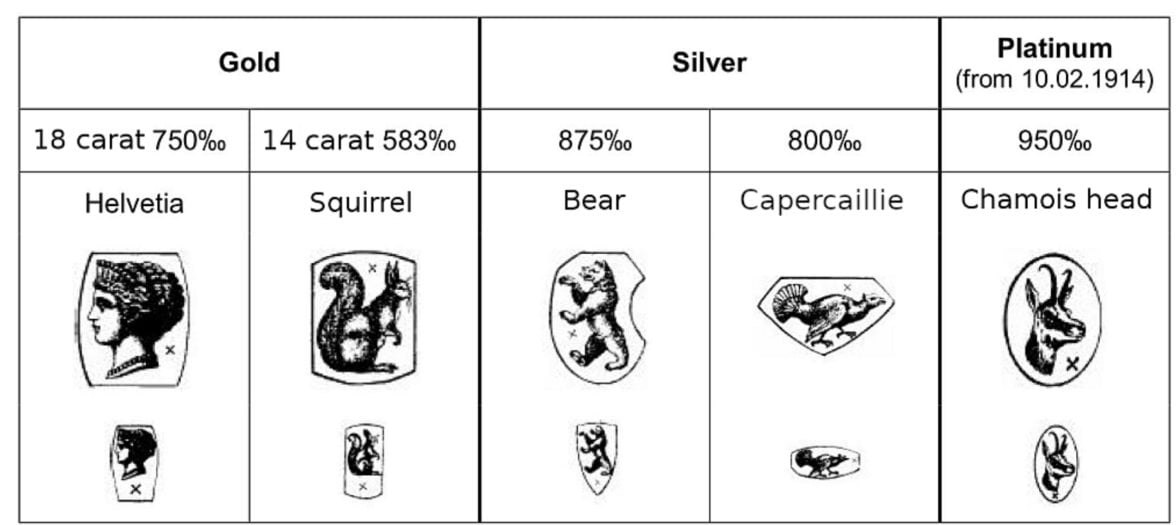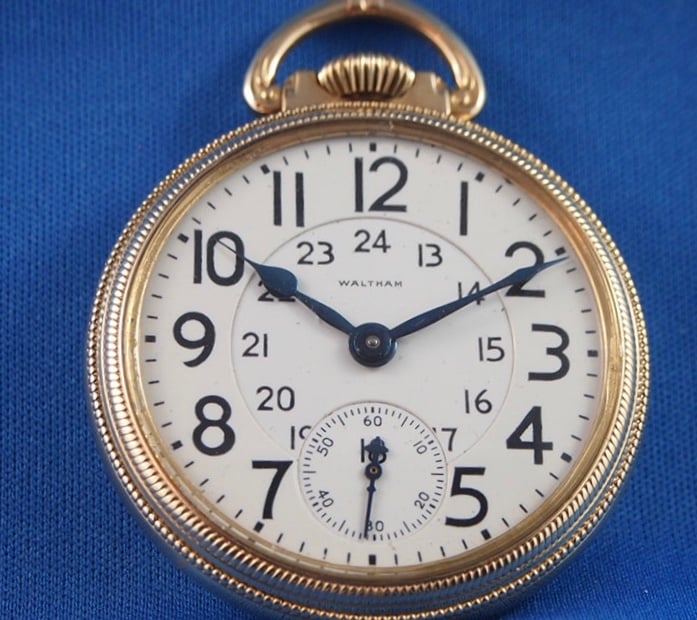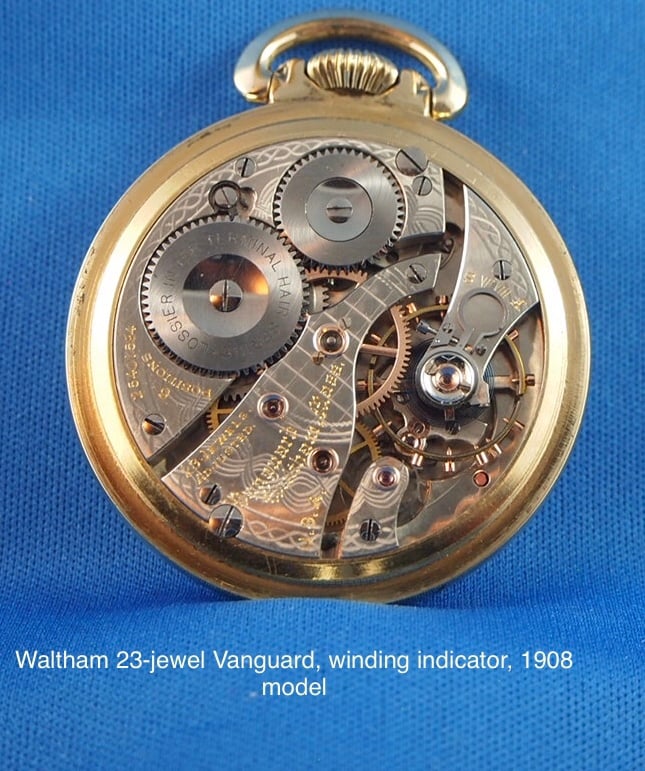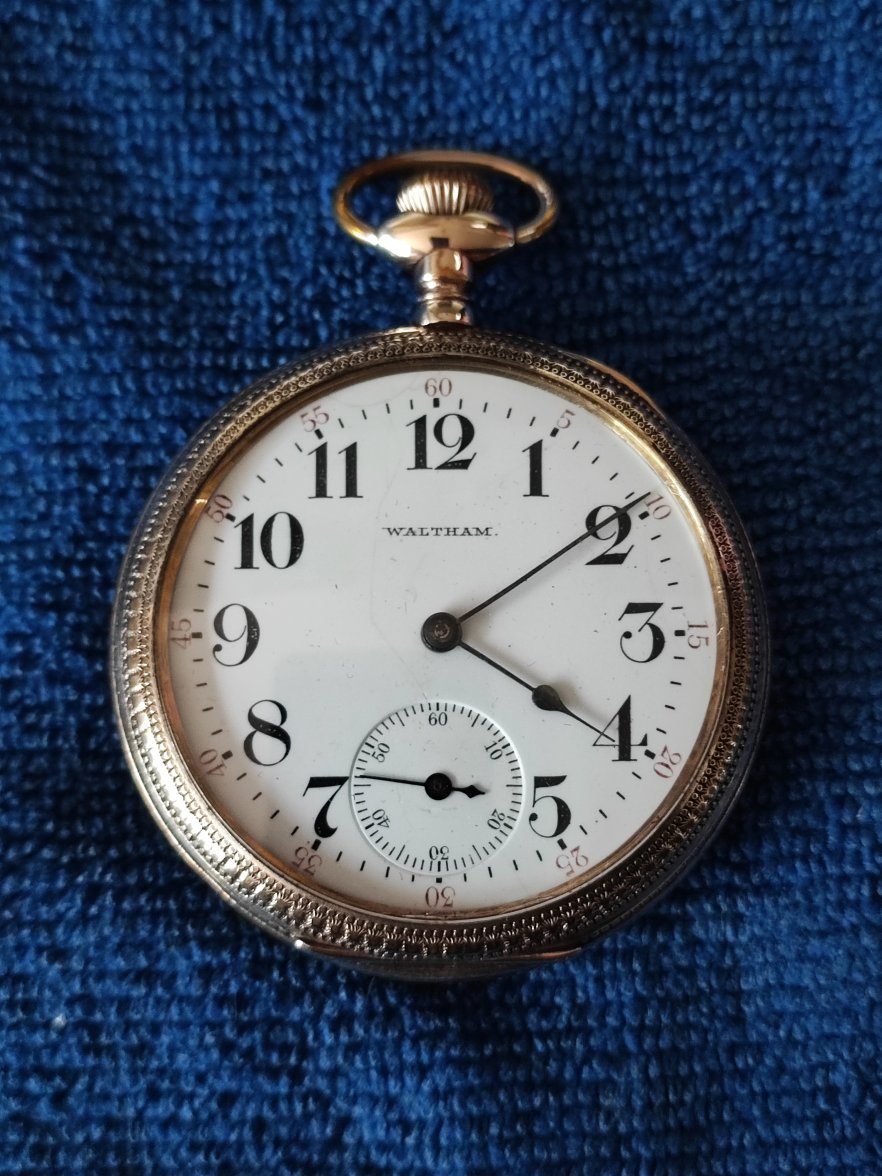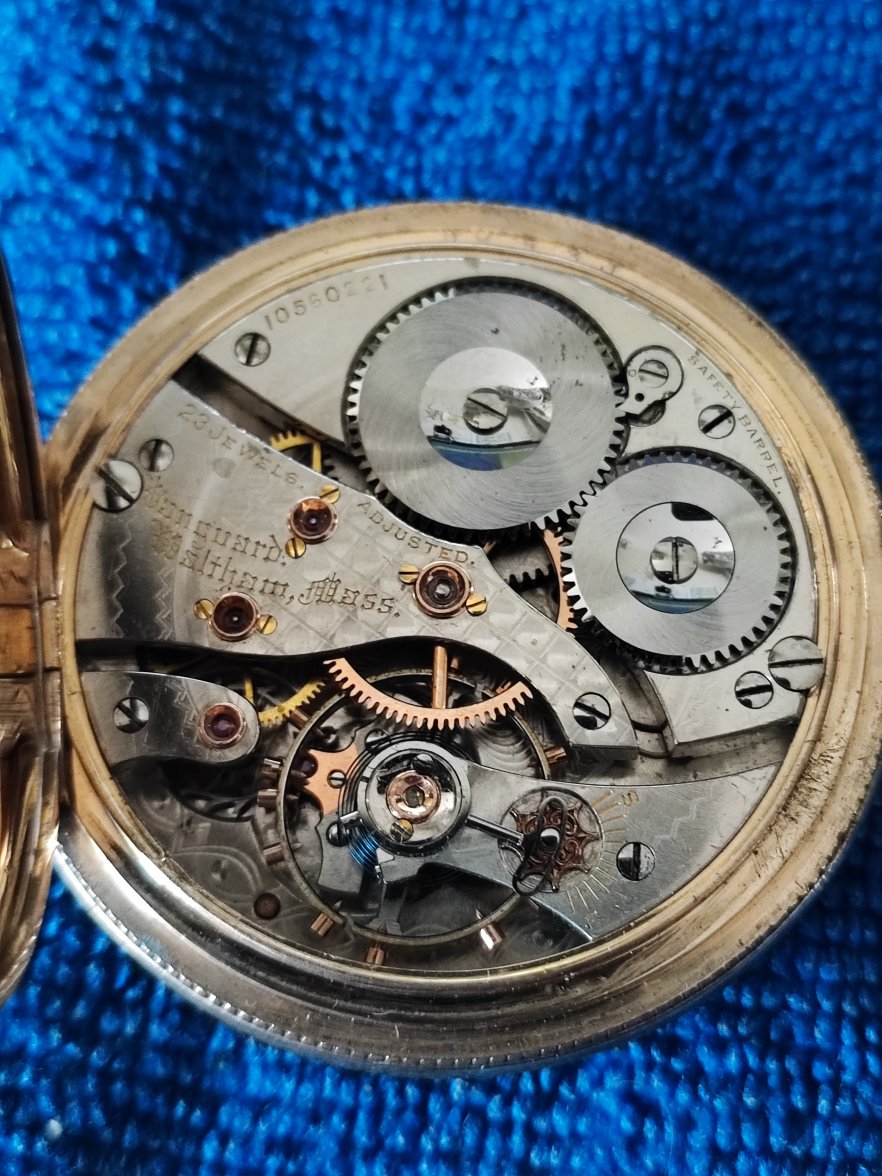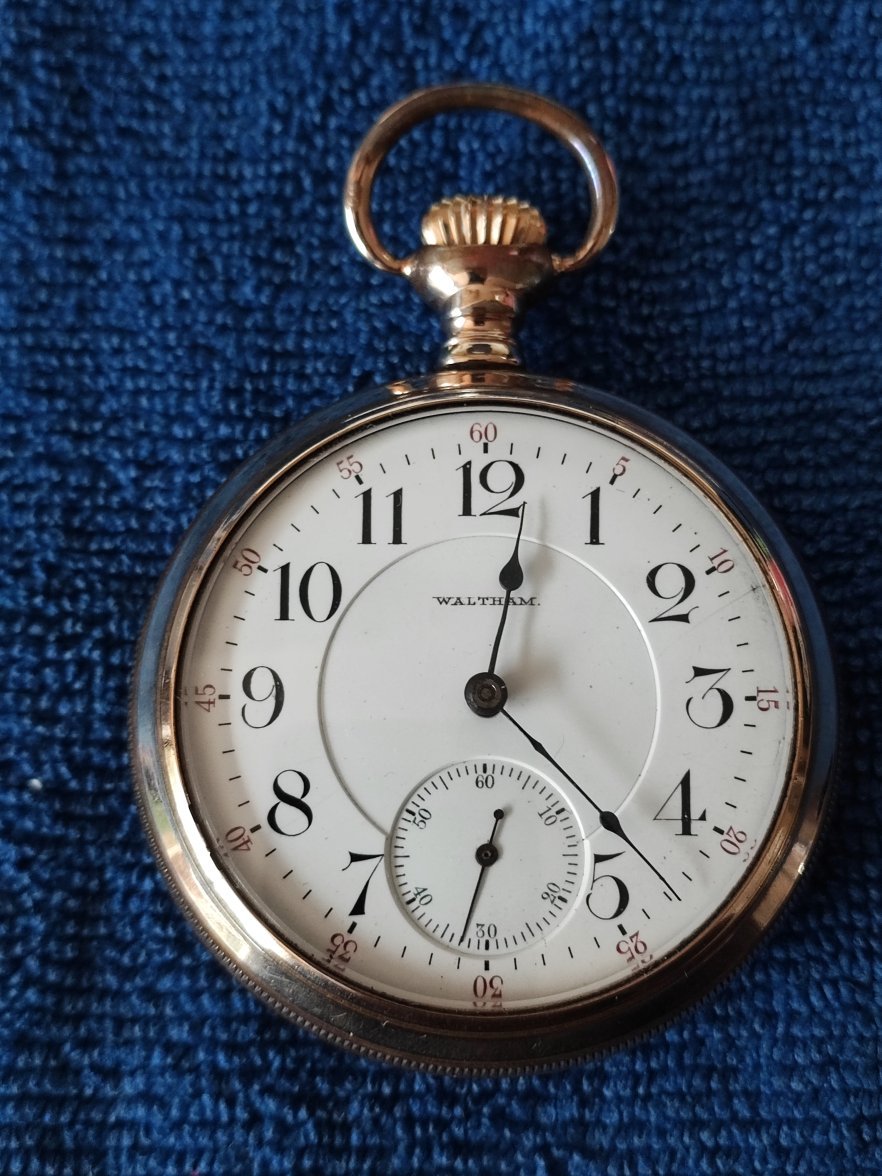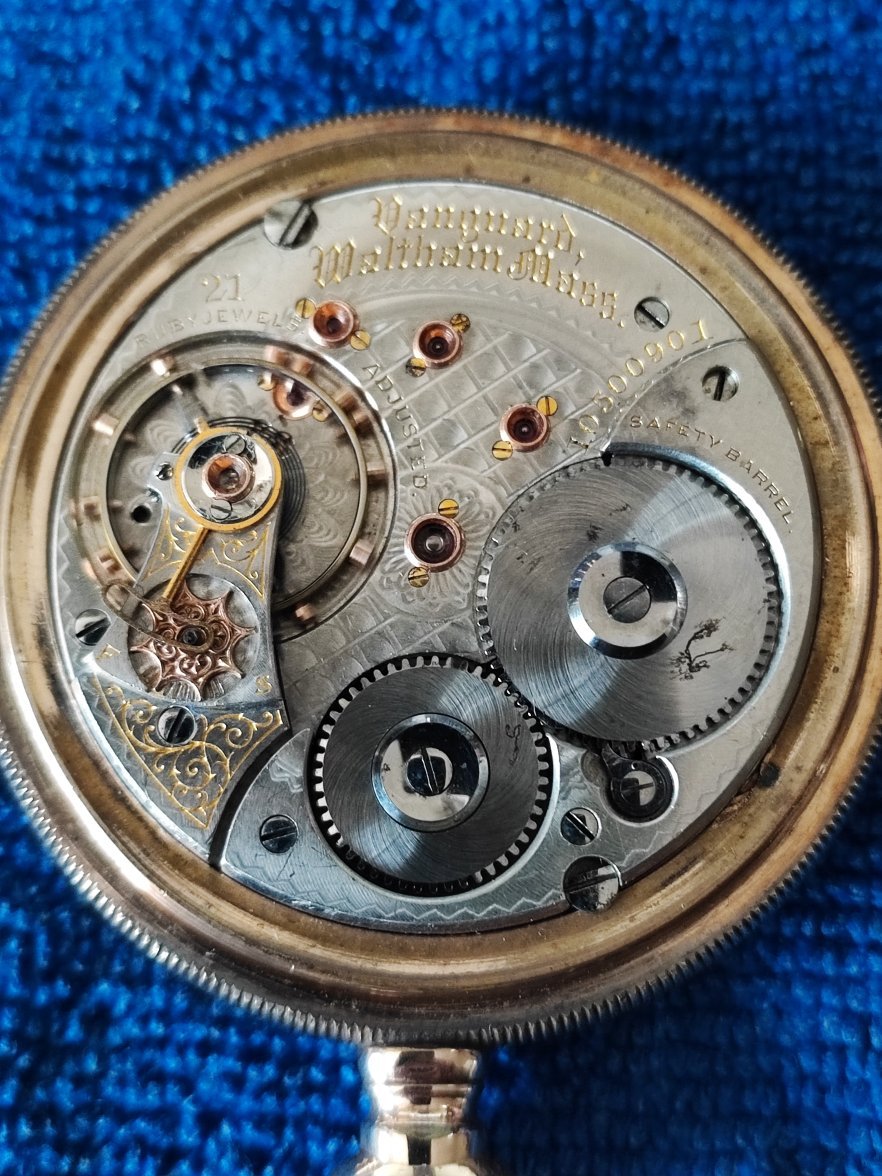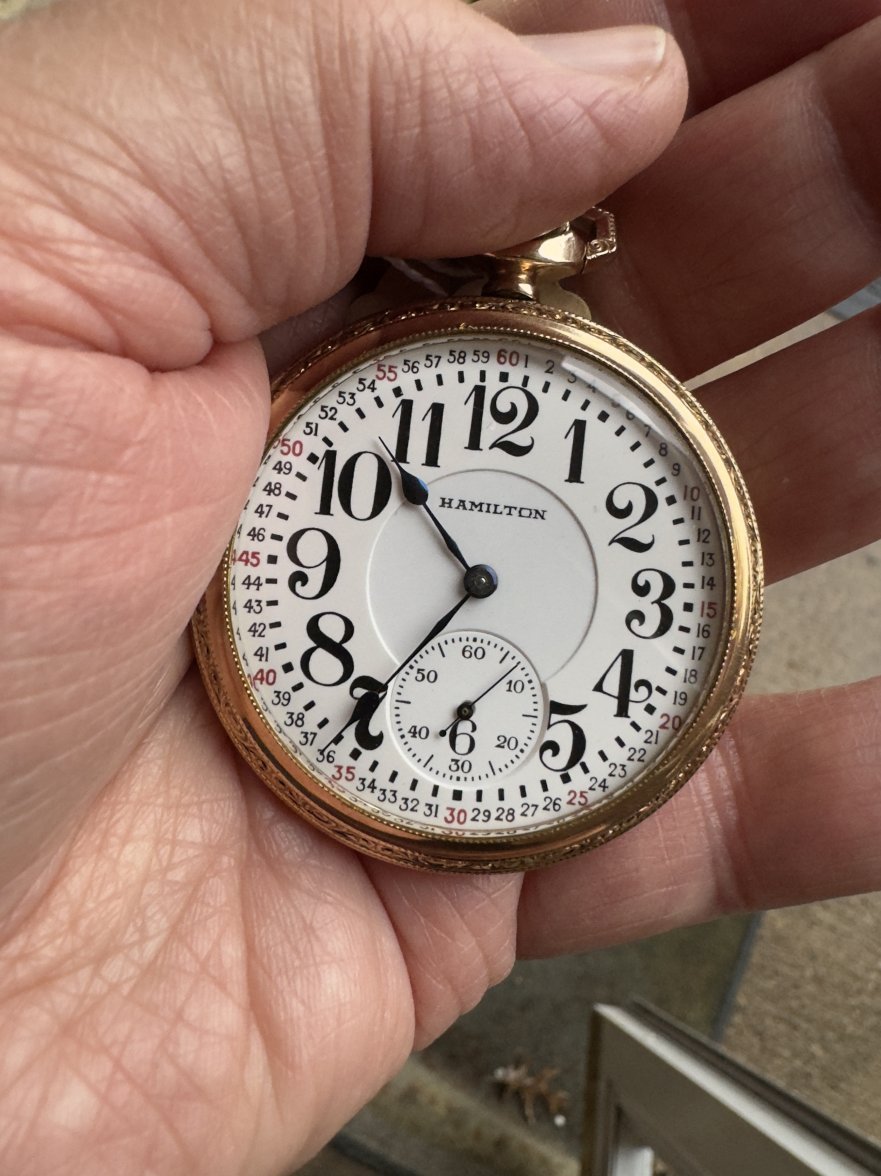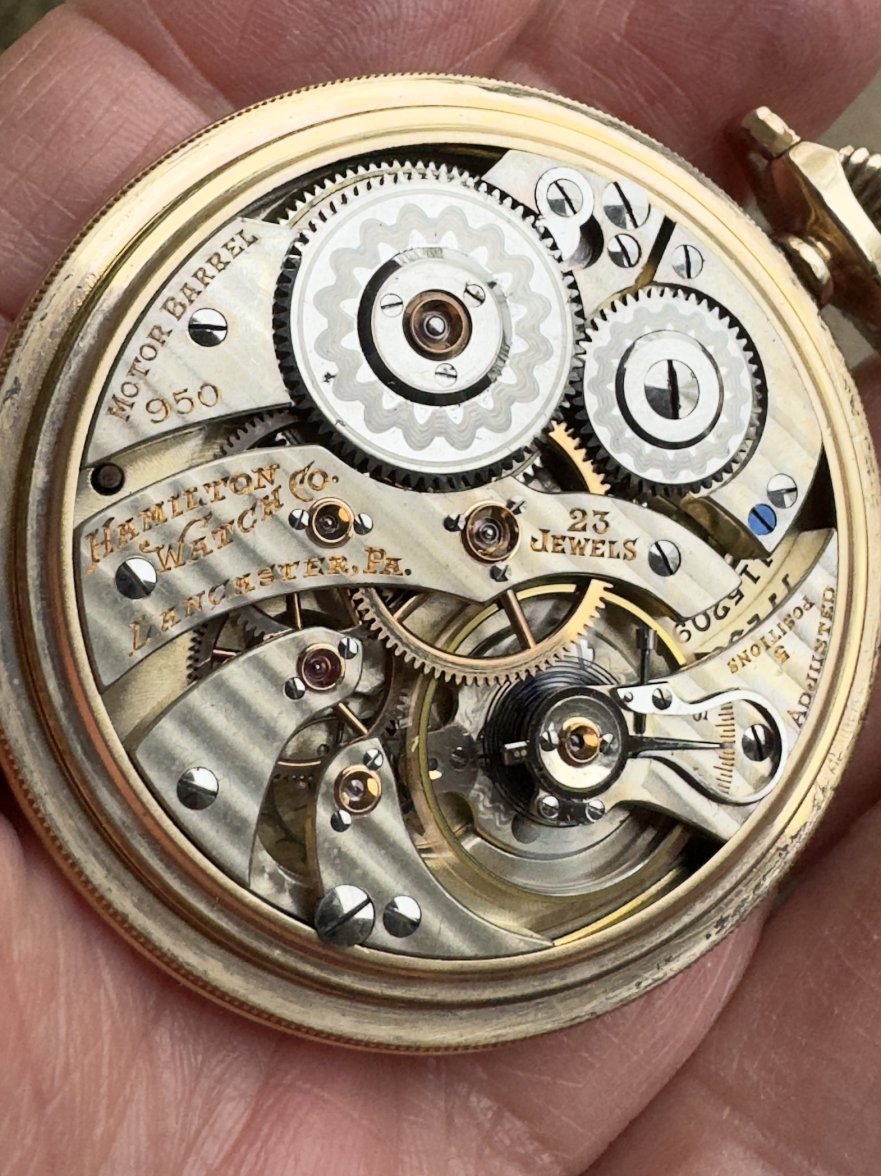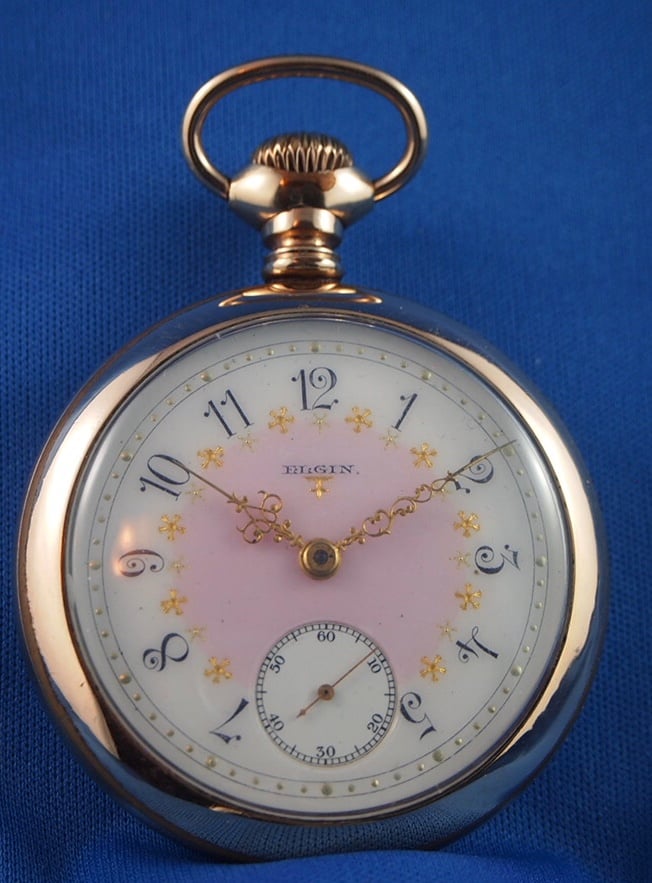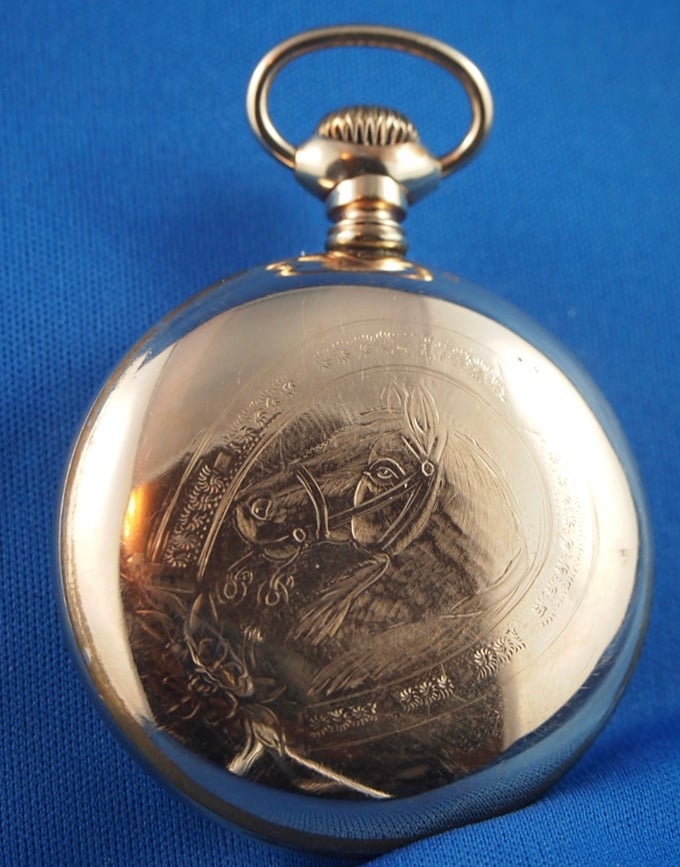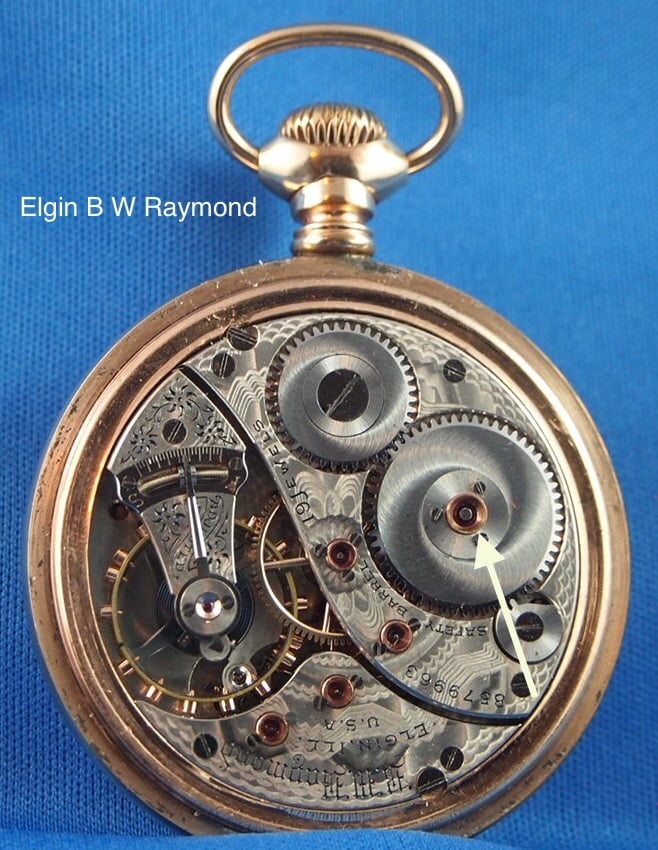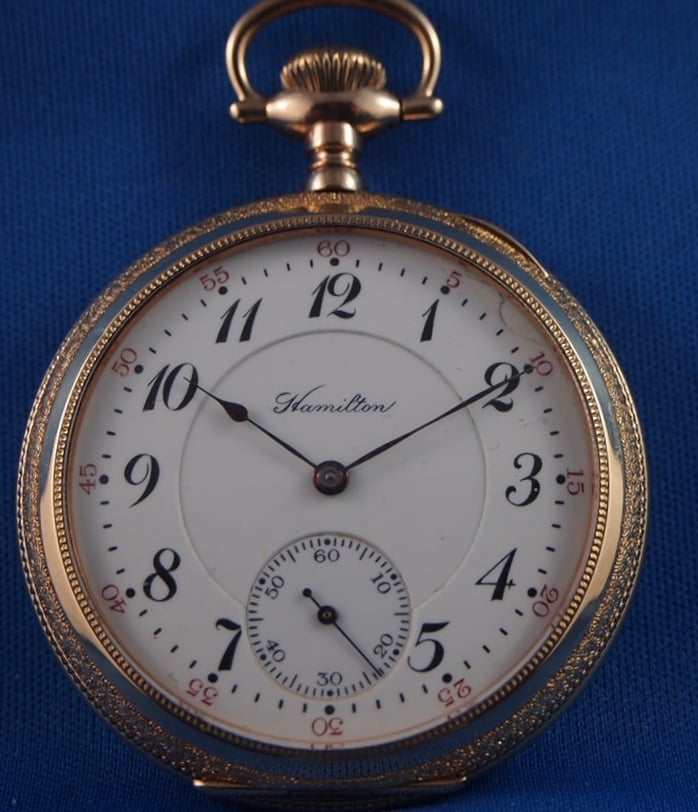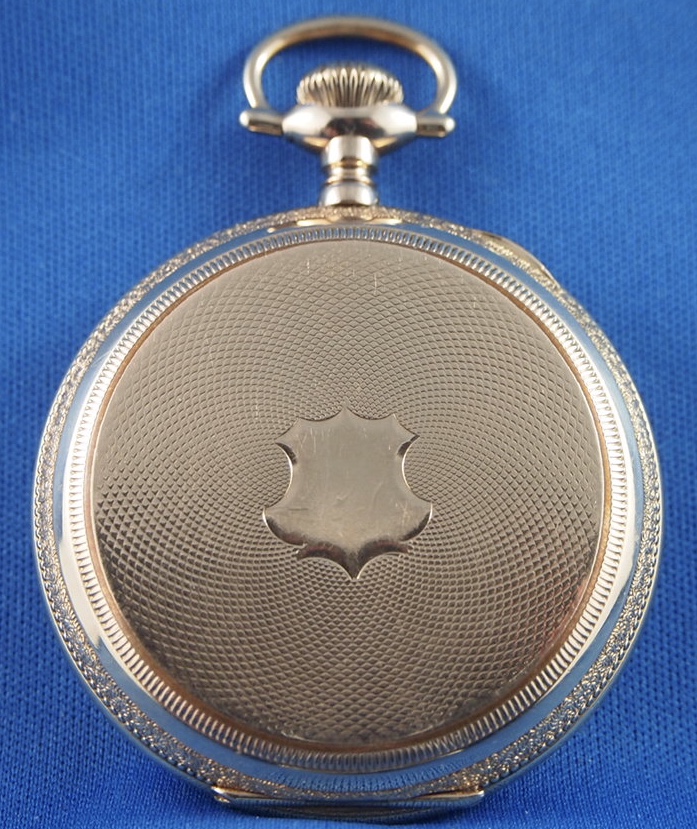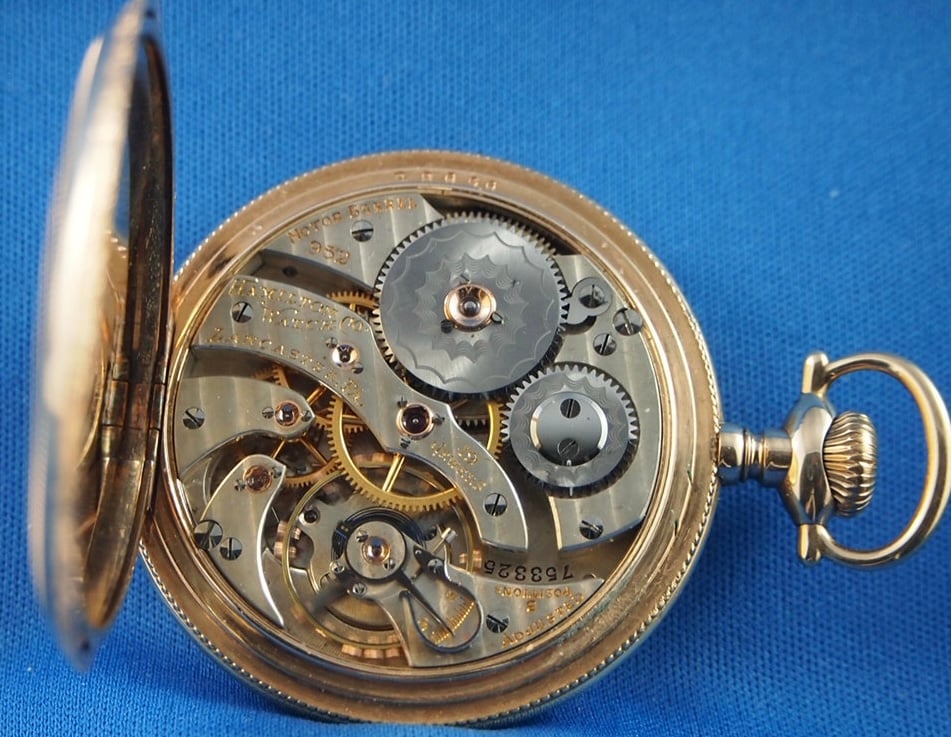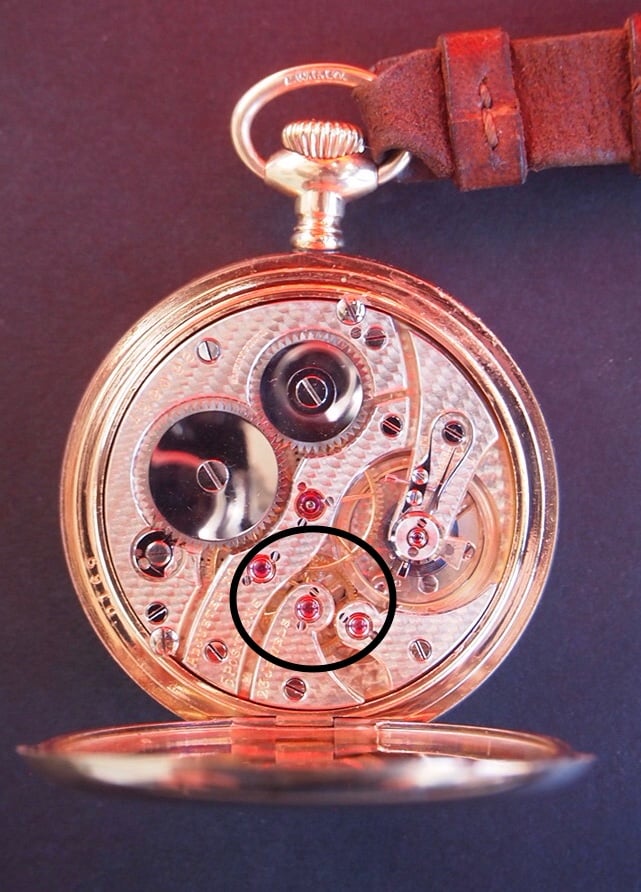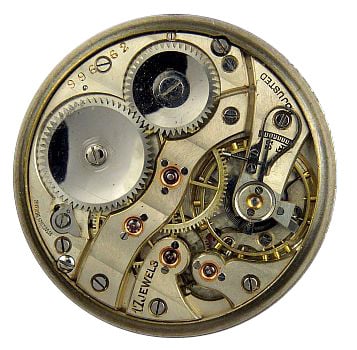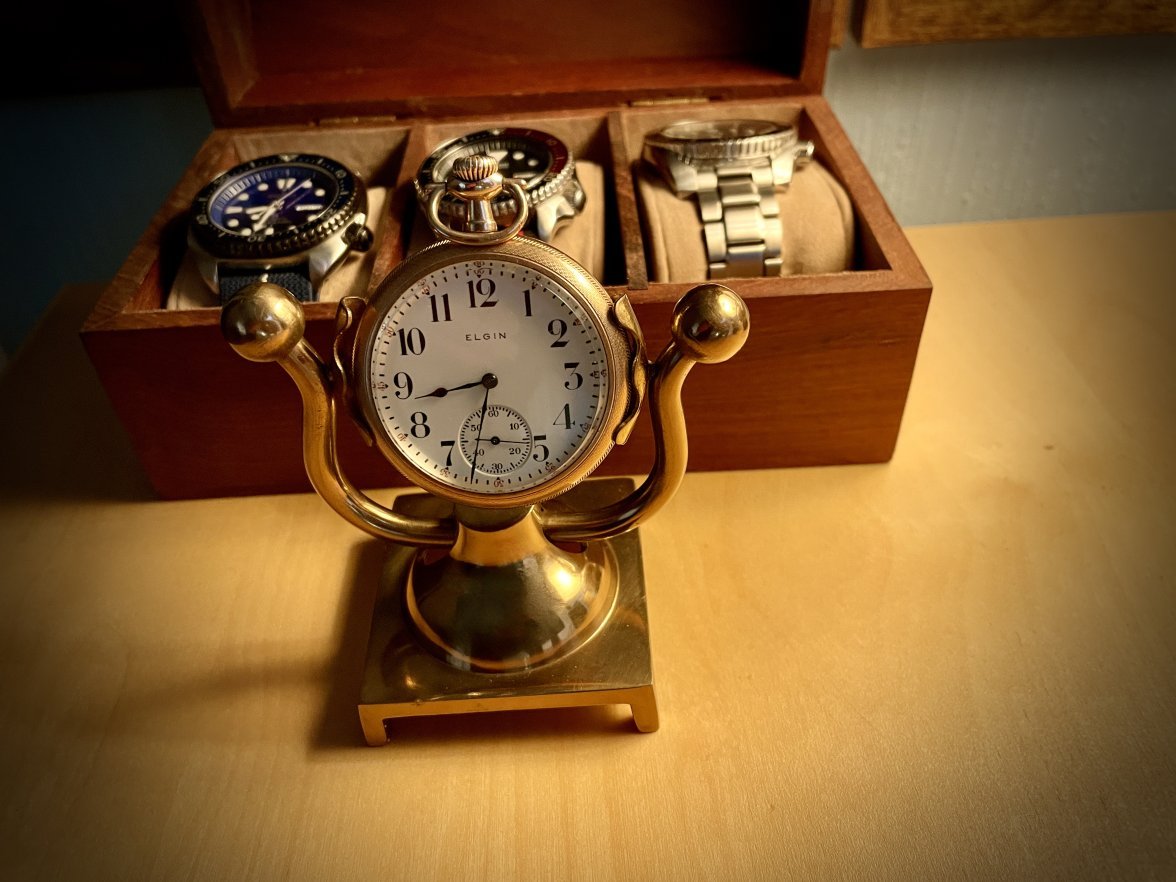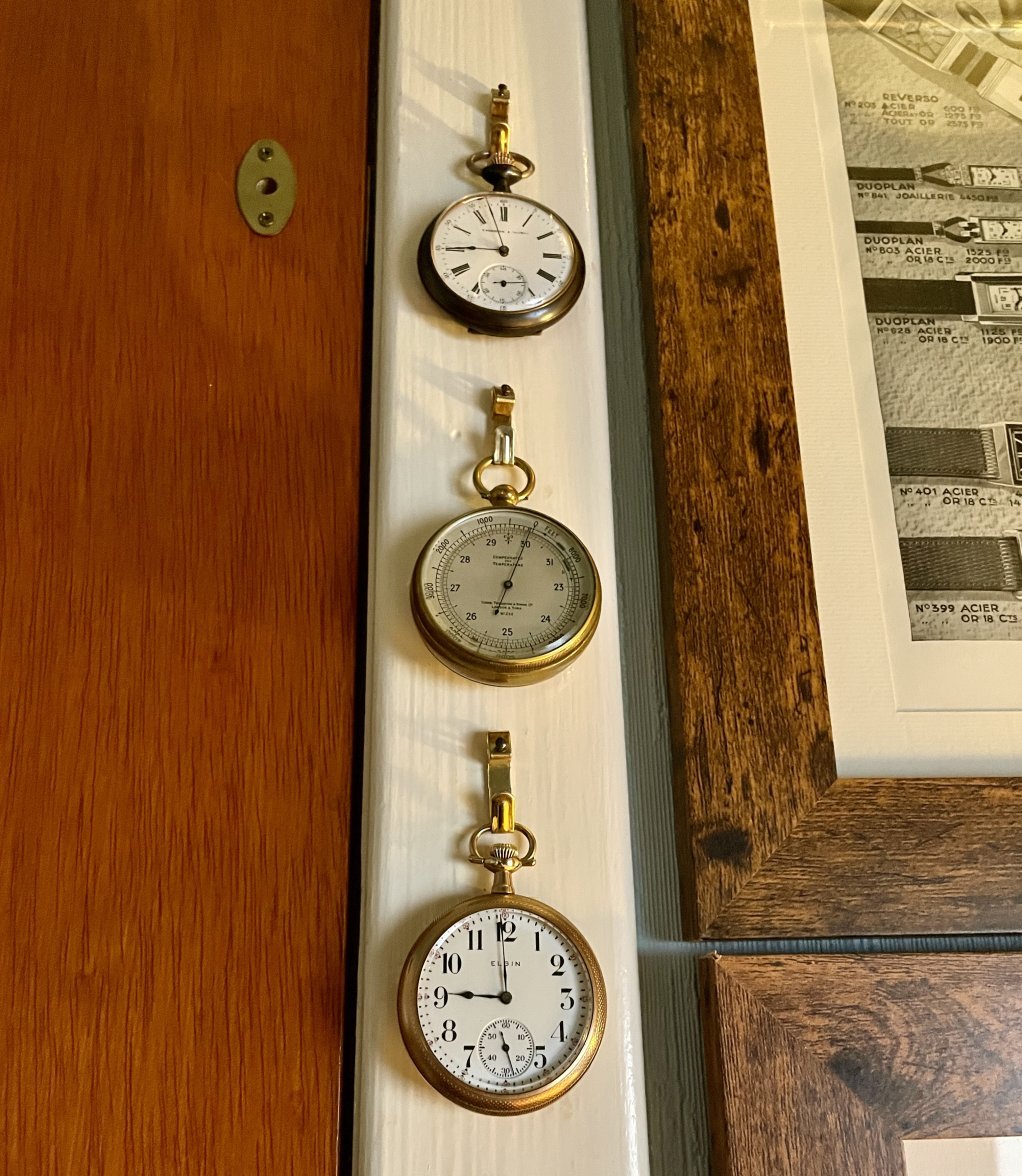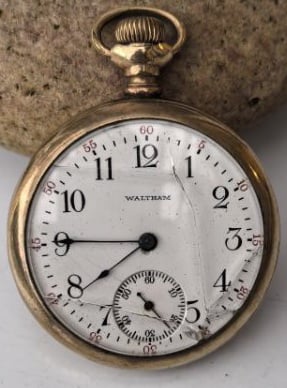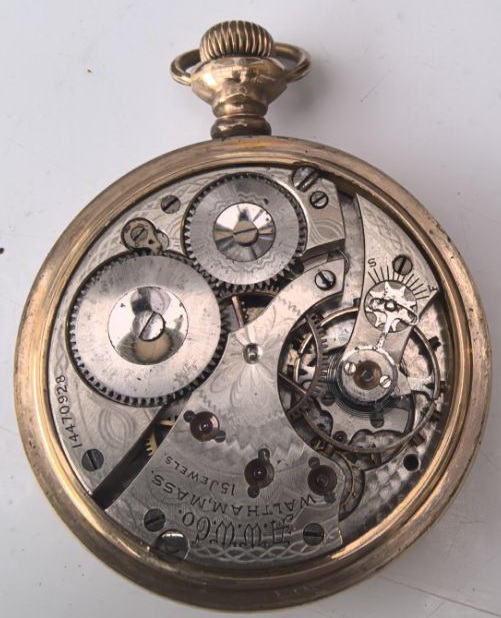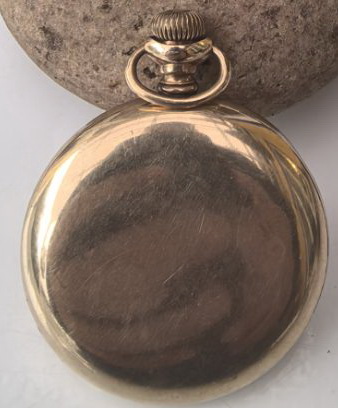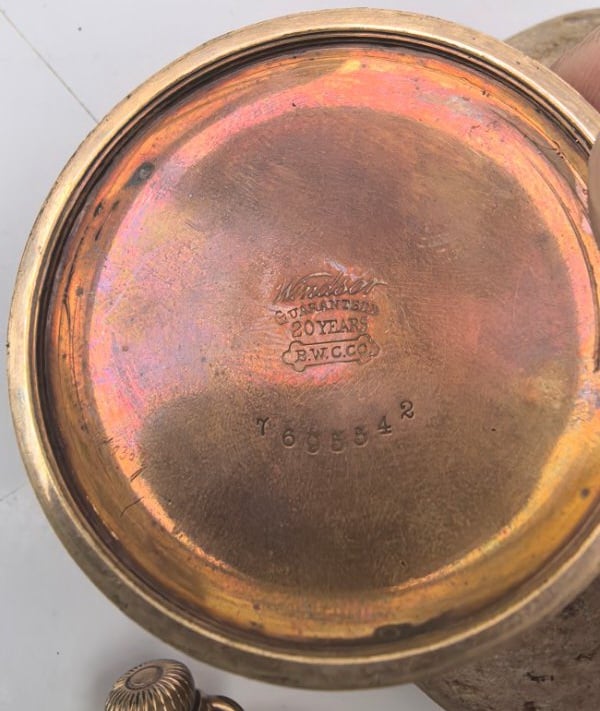Calling all Pocket Watch Buffs
DaveK
·Here is one I just purchased this morning after being offered it post auction, hopefully I haven't wasted my cash on it as I don't particularly want to buy Swiss PW's however this one has some parentage as those who recognize the makers Huguenin Freres mark may guess.
Seller pics
The dial is handsome, and the blue 24hr track is pretty dope. Congrats on the pick up. It didn’t sell and you were the Hail Mary?
Canuck
·Maker’s mark? Nothing on the movement that I saw. The NIEL inside the case back could mean NIELLO, the dark finish on the case back. Coin silver .900 fine. IIRC, U S manufacturers used .900 coin silver alloy. American case? The movement has a bi-metallic, temperature compensated balance wheel, blued steel Breguet hairspring, and whiplash micrometer regulator, so it would appear to be a touch above your typical orchard run Swiss movement of the era.
Canuck
·ghce
·The dial is handsome, and the blue 24hr track is pretty dope. Congrats on the pick up. It didn’t sell and you were the Hail Mary?
Yep the seller had a reserve on the auction and it didnt get met even though there were several different bidders and quite a few watching the auction, I was just lucky when the offer came thru that I was checking my emails so in that way beat out the competition.
Maker’s mark? Nothing on the movement that I saw. The NIEL inside the case back could mean NIELLO, the dark finish on the case back. Coin silver .900 fine. IIRC, U S manufacturers used .900 coin silver alloy. American case? The movement has a bi-metallic, temperature compensated balance wheel, blued steel Breguet hairspring, and whiplash micrometer regulator, so it would appear to be a touch above your typical orchard run Swiss movement of the era.
Well case makers mark with HF standing for Huguenin Freres a well known and famous to boot case maker and yes a NIELLO case that they were famous for making.
Lots of info on the internet for this company and a few examples sold at good price.
They supplied Omega, Zenith, Universal Geneve and other top manufacturers though I am not sure if its the same Freres that supplied hand made custom straps to PP and the like.
For US$49.00 I figured it was worth it.
Unfortunately don't know who's the movement is hopefully someone can enlighten me.
ghce
·Earlier in this thread I queried if it might be a U S case. But closer examination reveals a stamping that might be a standing bear which is a Swiss symbol for .0.875 (or perhaps 0.900) silver. See attachment.
(Image courtesy Vintage Watch Straps.)
Great spotting that! thanks hadn't taken to much notice of it as Swiss cases generally other than 3 bears or squirrels are about as far as I look.\
Yes if the movement had been your typical Ho Hum made on the kitchen bench from who knows and will never know suppliers that many of the era were like I would not have bought it.
Canuck
·ghce
·It seems the lowest legal purity for silver in England is 0.925 pure. 0.935 marked on a silver case might have 3 bears, but a silver case marked 0.900 would not likely be exported to Britain. The attached shows three bears accompanied by a 0.935 purity marking.
(Image courtesy Vintage Watch Straps)
I think tracking down the manufacture date would be key to understanding why there are discrepancies in the Rampant Bear symbol and 0.900 purity mark, I doubt this watch was exported to the UK with what's shown in the photos for all of your above reasons.
Canuck
·I really think the finish and attention to detail on 100 year old, high grade American pocket watches is unrivalled. I submit my 16-size, 1908 model Waltham Vanguard, double-sunk vitreous enamel, 24-hour dial, 23-jewel movement with six jewels in gold settings, bi-metallic temperature compensating balance wheel, blued steel Breguet hairspring, patent micrometer regulator, two diamond end stones on the balance staff, 8 adjustments, gold centre wheel, gold screws on balance wheel, swaged spokes on the train wheels. What you got?
And the same movement with the Lossier Inner Terminal Curve hairspring (note the ratchet wheel markings) which gave an added advantage to isochronism. This one has an up/down (winding indicator) feature.
And the same movement with the Lossier Inner Terminal Curve hairspring (note the ratchet wheel markings) which gave an added advantage to isochronism. This one has an up/down (winding indicator) feature.
Edited:
ghce
·TexOmega
·Canuck
·Canuck
·The Hamilton 23-jewel grade 950 shown by @TexOmega has a little brother. I too have a Hamilton grade 950 so I won’t show it. But I’ll show my 19-jewel Hamilton grade 952 which, records show, is a relatively scarce watch. It has everything the grade 950 has, just fewer jewels. The case on this one has a hinged bezel, back, and inner cuvette, so depending on the era, may not have been permitted for railroad use. There were three versions of this movement. This is the earliest version. It has a one-piece barrel bridge held with three screws. Later versions had a two-piece barrel bridge with four screws.
Edited:
TexOmega
·There can’t be too much beauty, can there! My 18-size, 19-jewel Elgin B W Raymond which was never used on a railroad. In your opinion, why might that have been with this watch? This one is from the second run of this model, made in 1903. A watch from Mrs. Cs family.
Why not RR grade?
No unobstructed Bold Numerals and the hands would not pass regulations. 21j may have been the standard in 1903.
Lovely PW no two ways about it, though!!
Canuck
·Why not RR grade?
No unobstructed Bold Numerals and the hands would not pass regulations. 21j may have been the standard in 1903.
Lovely PW no two ways about it, though!!
I posed a leading question. The 19-jewel B W Raymond WAS railroad standard, as indicated by the pocketwatchdatabase information. This one however was NOT railroad approved! The subject watch was not marked with adjustments to position, or with double roller which became essential at one point in time. The question I posed related to the dial and hands used on this watch. They were NOT railroad standard. However, the watch was bought by my wife’s great uncle (or great grandfather, I forget which) who was a farmer and hardware merchant in Spangle, Washington, at the turn of the 20th century, and he liked it the way it is! And so do I!
ghce
·Maker’s mark? Nothing on the movement that I saw. The NIEL inside the case back could mean NIELLO, the dark finish on the case back. Coin silver .900 fine. IIRC, U S manufacturers used .900 coin silver alloy. American case? The movement has a bi-metallic, temperature compensated balance wheel, blued steel Breguet hairspring, and whiplash micrometer regulator, so it would appear to be a touch above your typical orchard run Swiss movement of the era.
The movement on this appears to be a Gallet / Electa though calibre unknown, this link provided by a very helpful poster on the NAWCC forum.
https://www.boldtimepieces.co.uk/pr...-b-k-electa-pocket-watch-30-hour-non-luminous
And having found the Gallet Electa connection that also may add some resolution to an early question posed regarding the identity of one of your pocket watch movements as per this post
https://omegaforums.net/threads/calling-all-pocket-watch-buffs.127856/page-77
Which certainly seems to be this one though with some slight differences but strikingly similar.
https://www.vintagewatchstraps.com/movements.php#galletelectap
It does seem that Gallet or Electa commonly did not label their movements which is a bit odd as they are a very famous and well respected watch maker that did not have its roots in the Swiss cottage industry of watchmaking unlike many other unlabeled movements.
Edited:
Alpha
··Kilt Owner, Beagle Parent, Omega CollectorAlpha
··Kilt Owner, Beagle Parent, Omega Collectorghce
·Bought at auction tonight, working mid grade 620 movement in a nice case, needs a new glass.
Not rare or special but too cheap, paid less than US$60.00
https://pocketwatchdatabase.com/search/result/waltham/14470928
Not rare or special but too cheap, paid less than US$60.00
https://pocketwatchdatabase.com/search/result/waltham/14470928
